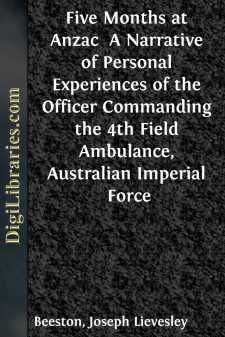Categories
- Antiques & Collectibles 13
- Architecture 36
- Art 48
- Bibles 22
- Biography & Autobiography 816
- Body, Mind & Spirit 145
- Business & Economics 28
- Children's Books 17
- Children's Fiction 14
- Computers 4
- Cooking 94
- Crafts & Hobbies 4
- Drama 346
- Education 58
- Family & Relationships 59
- Fiction 11834
- Foreign Language Study 3
- Games 19
- Gardening 17
- Health & Fitness 34
- History 1378
- House & Home 1
- Humor 147
- Juvenile Fiction 1873
- Juvenile Nonfiction 202
- Language Arts & Disciplines 89
- Law 16
- Literary Collections 686
- Literary Criticism 179
- Mathematics 13
- Medical 41
- Music 40
- Nature 179
- Non-Classifiable 1768
- Performing Arts 7
- Periodicals 1453
- Philosophy 66
- Photography 2
- Poetry 897
- Political Science 203
- Psychology 45
- Reference 154
- Religion 516
- Science 126
- Self-Help 85
- Social Science 82
- Sports & Recreation 34
- Study Aids 3
- Technology & Engineering 59
- Transportation 23
- Travel 463
- True Crime 29
Our website is made possible by displaying online advertisements to our visitors.
Please consider supporting us by disabling your ad blocker.
Five Months at Anzac A Narrative of Personal Experiences of the Officer Commanding the 4th Field Ambulance, Australian Imperial Force
Categories:
Description:
Excerpt
FOURTH FIELD AMBULANCE
Shortly after the outbreak of War—after the first contingent had been mobilised, and while they were undergoing training—it became evident that it would be necessary to raise another force to proceed on the heels of the first. Three Infantry Brigades with their Ambulances had already been formed; orders for a fourth were now issued, and naturally the Ambulance would be designated Fourth Field Ambulance.
The Fourth Brigade was composed of the 13th Battalion (N.S.W.), 14th (Victoria), 15th (Queensland) and 16th (Western Australia)—commanded respectively by Lieutenant-Colonel Burnage, Lieutenant-Colonel Courtnay, Lieutenant-Colonel Cannon and Lieutenant-Colonel Pope. The Brigade was in charge of Colonel Monash, V.D., with Lieutenant-Colonel McGlinn as his Brigade Major.
As it will be necessary from time to time to allude to the component parts of the Ambulance, it may be as well to describe how an ambulance is made up. It is composed of three sections, known as A, B, and C, the total of all ranks being 254 on a war strength. It is subdivided into Bearer, Tent and Transport Divisions. Each section has its own officers, and is capable of acting independently. Where there is an extended front, it is frequently desirable to detach sections and send them to positions where the work is heaviest.
As the name implies, the Bearers convey the wounded to the dressing station (or Field Hospital, as the case may be). Those in the Tent Division dress the cases and perform nursing duties, while the Transport Division undertakes their conveyance to Base Hospital.
It was decided to recruit the Fourth Field Ambulance from three States, A Section from Victoria, B from South Australia, C from Western Australia. Recruiting started in Broadmeadows, Victoria, on the 19th October, 1914, and thirty men enrolled from New South Wales were included in A Section. Towards the end of November B Section from South Australia joined us, and participated in the training. On the 22nd December we embarked on a transport forming one of a convoy of eighteen ships. The nineteenth ship —— joined after we left Albany.
Details from the Ambulance were supplied to different ships and the officers distributed among the fleet. Our last port in Australia was Albany, which was cleared on the last day of 1914—a beautiful night and clear day, with the sea as smooth as the proverbial glass.
THE VOYAGE
The convoy was under the command of Captain Brewis—a most capable and courteous officer, but a strict disciplinarian. To a landsman, his control of the various ships and his forethought in obtaining supplies seemed little short of marvellous. I had the good fortune to be associated with Captain Brewis on the passage from Colombo to Alexandria on board the —— and his friendship is a pleasant memory.
The fleet was arranged in three lines, each ship being about three lengths astern of the one ahead. The sight was most inspiriting, and made one feel proud of the privilege of participation....


